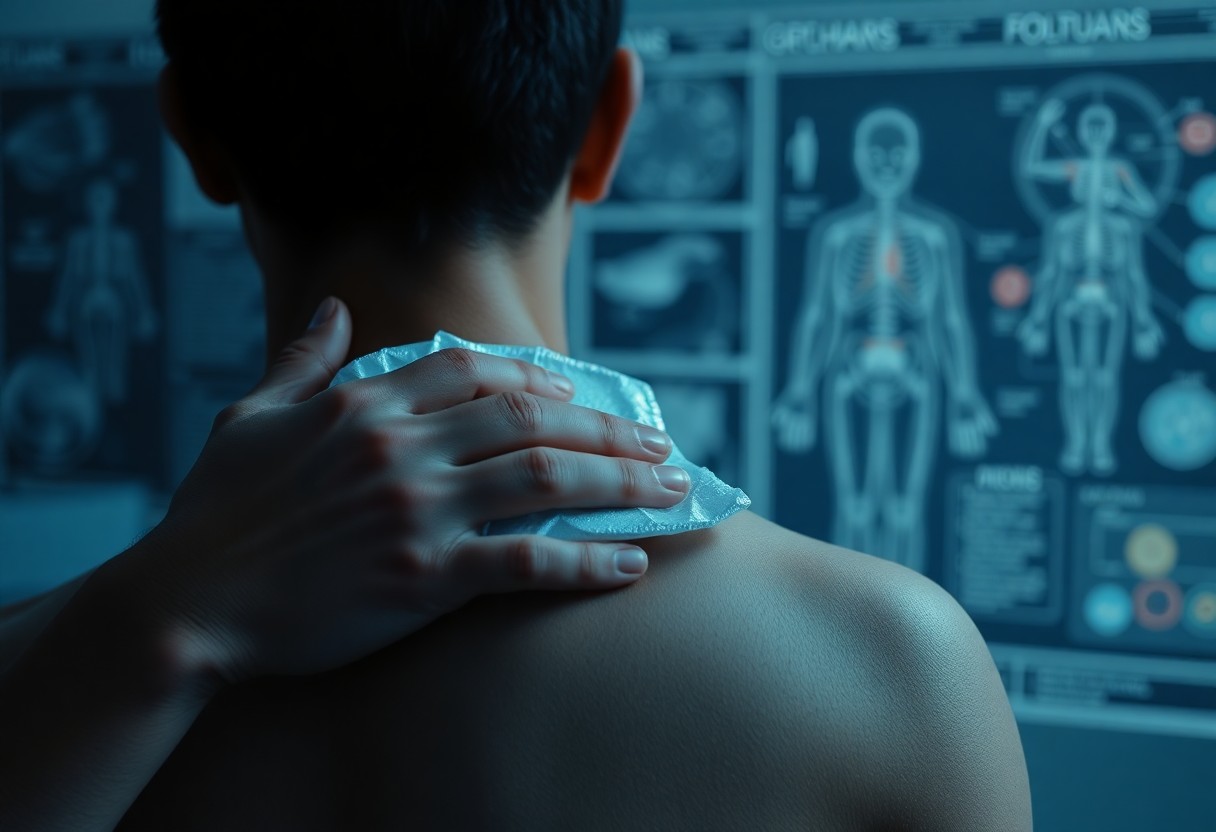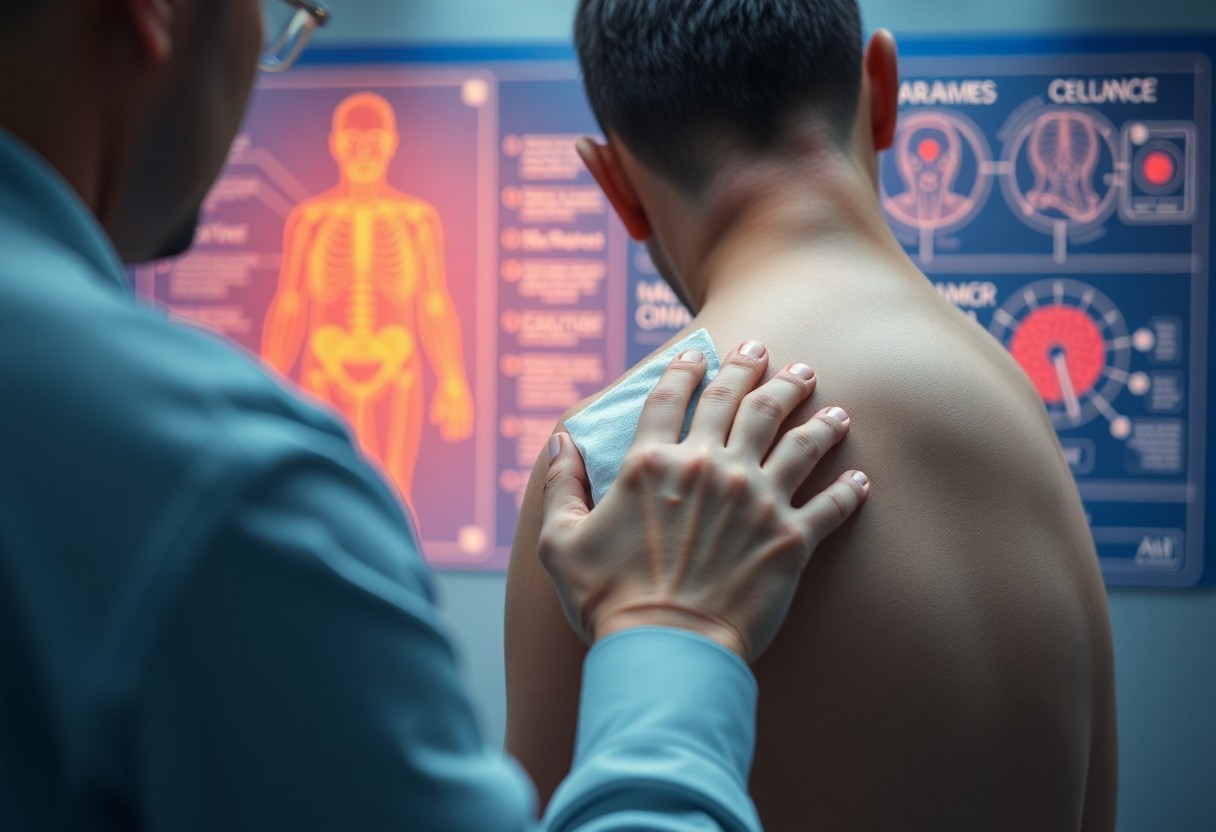As you investigate into the world of cold therapy, you may wonder how it affects your body. When you apply extreme cold to your skin, it causes blood vessels to constrict, reducing inflammation and pain. This is because your body’s natural response to cold is to prioritize internal organ function, reducing blood flow to non-necessary areas. By understanding the science behind cold therapy, you can harness its therapeutic benefits while minimizing potential risks.

Principles of Cold Therapy
Your body’s response to cold temperatures is a complex process that involves multiple physiological changes, which are the foundation of cold therapy.
Physiological Response to Cold
Beneath the surface, your body’s immediate reaction to cold is to reduce blood flow to the affected area, minimizing heat loss and protecting your internal organs from the cold stress.
Effects on Inflammation and Pain
Around the concept of cold therapy, you’ll find that it has a profound impact on reducing inflammation and pain, making it an effective treatment for various conditions.
Consequently, as you apply cold therapy, you’ll experience a significant reduction in swelling and discomfort, allowing your body to heal more efficiently, and it’s vital to note that cold therapy can also have negative effects if not used properly, such as nerve damage or frostbite, so it’s vital to follow a qualified professional’s guidance when using cold therapy.

Cryotherapy Methods
Assuming you are interested in exploring the various techniques used in cold therapy, you will find that there are several methods to choose from, each with its own unique benefits and applications, allowing you to select the one that suits your needs and goals, and enhance your overall well-being.
Ice Baths and Contrast Water Therapy
Contrary to what you might think, contrast water therapy, which involves alternating between hot and cold water, can be an effective way to reduce inflammation and improve circulation, while ice baths are commonly used for reducing muscle soreness after intense exercise, allowing you to recover faster.
Whole-Body Cryotherapy Chambers
Against the cold, your body will naturally respond by increasing your circulation and releasing anti-inflammatory chemicals, which can help to reduce pain and inflammation, as you step into a whole-body cryotherapy chamber, where you will be exposed to extremely low temperatures for a short period of time.
At the core of whole-body cryotherapy chambers is the use of liquid nitrogen to cool the air to temperatures as low as -200°F, which can be dangerous if not done properly, but when used correctly, can have significant health benefits, such as reducing muscle spasms and improving your mental clarity, as you experience the invigorating effects of cold therapy on your entire body, allowing you to feel refreshed and revitalized.
Biological Responses
One of the primary effects of cold therapy on your body is the activation of various biological responses that help your body adapt to the stress caused by the cold. As you expose yourself to cold temperatures, your body responds in several ways to maintain homeostasis.
Vasoconstriction and Vasodilation
Behind the scenes, your blood vessels constrict or dilate in response to cold temperatures, which affects blood flow and oxygen delivery to your tissues. This process, known as vasoconstriction and vasodilation, helps your body conserve heat and maintain core temperature.
Hormonal and Neurological Effects
With the application of cold therapy, you experience a range of hormonal and neurological effects that influence your mood, pain perception, and overall physiological response. As your body adapts to the cold stress, it releases stress hormones like adrenaline and noradrenaline, which can have both positive and negative effects on your body.
Another key aspect of hormonal and neurological effects is the release of endorphins, also known as “feel-good” hormones, which can help alleviate chronic pain and improve your mood. However, it’s crucial to be aware of the potential risks of hypothermia and frostbite associated with extreme cold therapy, and to take necessary precautions to avoid these dangerous conditions. As you consider cold therapy, be sure to consult with a healthcare professional to determine the best approach for your individual needs and to minimize potential side effects.
Effects on Muscle and Joint Recovery
Now, as you investigate into the effects of cold therapy on your body, you will notice significant improvements in your muscle and joint recovery. Cold therapy has been shown to have a profound impact on your overall physical well-being, particularly in reducing muscle soreness and improving joint mobility.
Reduced Muscle Soreness and Inflammation
Alongside the benefits of cold therapy, you will experience reduced muscle soreness and inflammation, allowing your body to heal faster and more efficiently. This is due to the constriction of blood vessels, which reduces blood flow to the affected area, thereby decreasing inflammation and muscle spasms.
Improved Joint Mobility and Function
Besides the benefits of reduced muscle soreness, you will also experience improved joint mobility and function, enabling you to move more freely and perform daily activities with greater ease. Your joints will be more flexible and stable, allowing for a wider range of motion.
Hence, as you continue to use cold therapy, you will notice a significant improvement in your joint mobility and function, allowing you to perform activities that were previously painful or challenging. You will be able to move with greater confidence and stability, reducing your risk of injury and further damage to your joints.
Risks and Contraindications
Allcold therapy treatments carry some level of risk, and understanding these risks is imperative for safe and effective use. As you consider cold therapy, be aware of the potential risks and take necessary precautions to minimize them.
Hypothermia and Frostbite
Contrary to the benefits, cold therapy can lead to hypothermia and frostbite if not used properly. As you expose your body to cold temperatures, monitor your body’s response and adjust the treatment accordingly to avoid these serious conditions.
Precautions for Certain Medical Conditions
Counterintuitively, cold therapy may not be suitable for everyone, particularly those with certain medical conditions. As you consider cold therapy, consult with your doctor if you have any pre-existing conditions, such as raynaud’s disease or poor circulation, to ensure safe use.
Considering your individual health needs, it is imperative to exercise caution when using cold therapy. If you have a medical condition, consult with your doctor to determine the best course of treatment and to minimize potential risks. By taking the necessary precautions and understanding your body’s limits, you can safely and effectively use cold therapy to achieve your health goals.
Applications and Benefits
After exploring the science behind cold therapy, you can now discover its various applications. You will find that cold therapy has numerous benefits, from reducing inflammation to improving your overall well-being, and enhancing your physical recovery.
Sports and Athletic Recovery
Between intense workouts, you can utilize cold therapy to reduce muscle soreness and improve your athletic performance. By incorporating cold therapy into your routine, you can experience faster recovery times and reduced muscle inflammation.
Medical and Therapeutic Uses
Benefits of cold therapy extend beyond sports recovery, as you can use it to alleviate chronic pain and reduce inflammation in your body. You can also use cold therapy to improve your mental health and reduce stress.
Another significant advantage of cold therapy is its ability to reduce swelling and promote healing in your body. As you continue to use cold therapy, you will notice improvements in your overall health, from reduced muscle spasms to enhanced immune function, allowing you to take control of your well-being and make informed decisions about your health.
Final Words
So, as you now understand the science behind cold therapy, you can appreciate its effects on your body. You have learned how cold temperatures reduce inflammation and numb pain, allowing your muscles to recover. By applying this knowledge, you can harness the benefits of cold therapy to improve your overall well-being and enhance your physical performance, taking control of your recovery process with precision and insight into the underlying scientific mechanisms.

